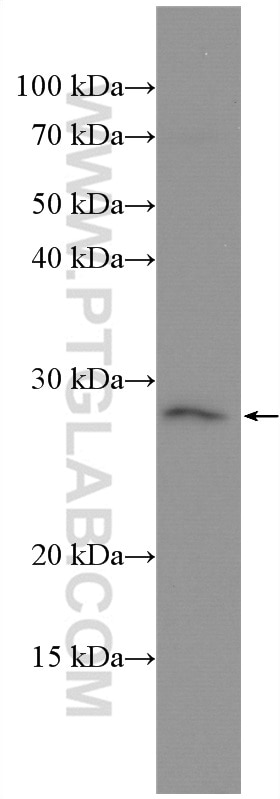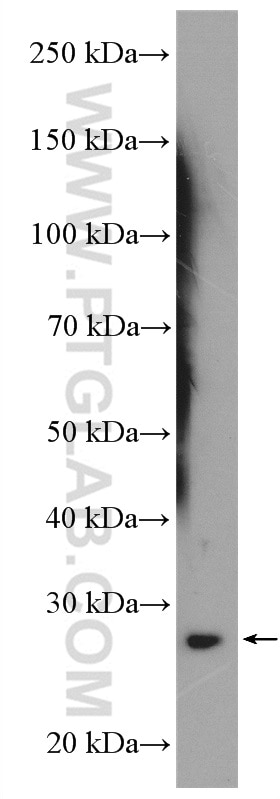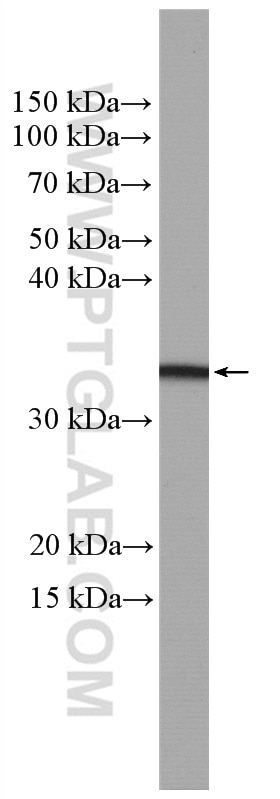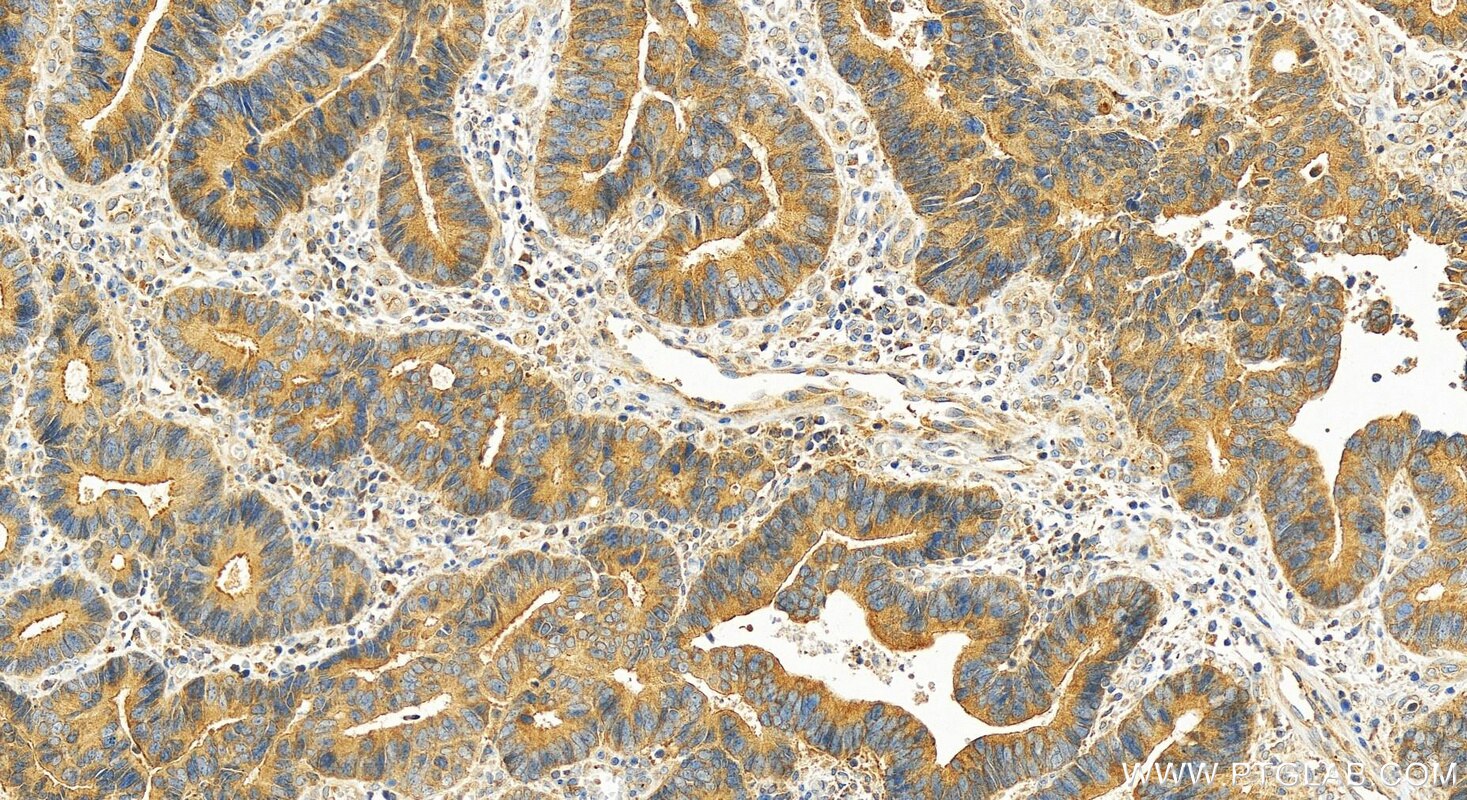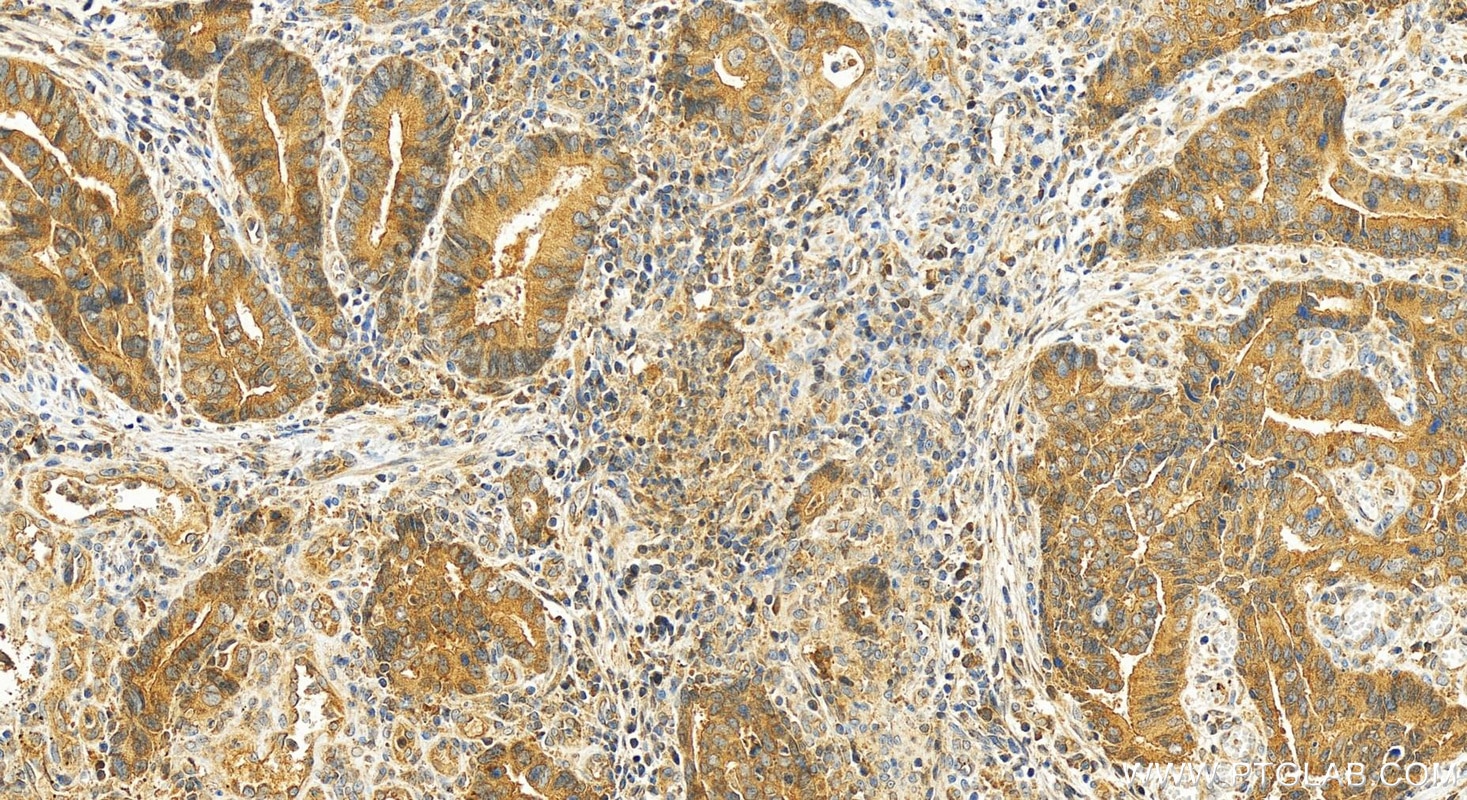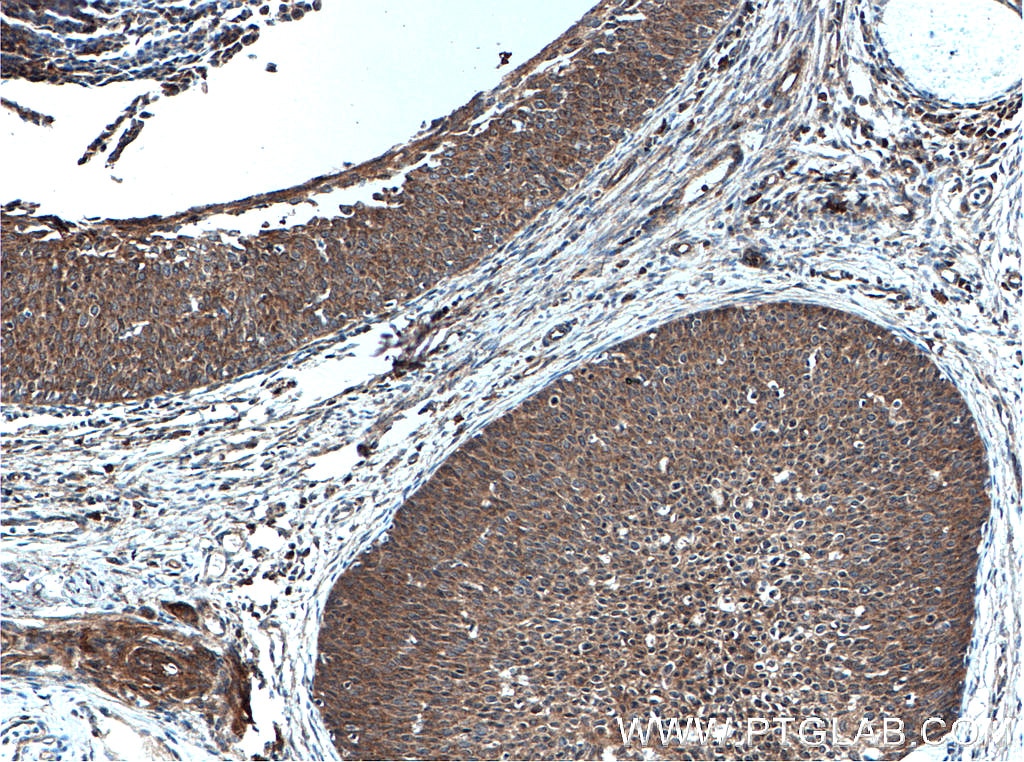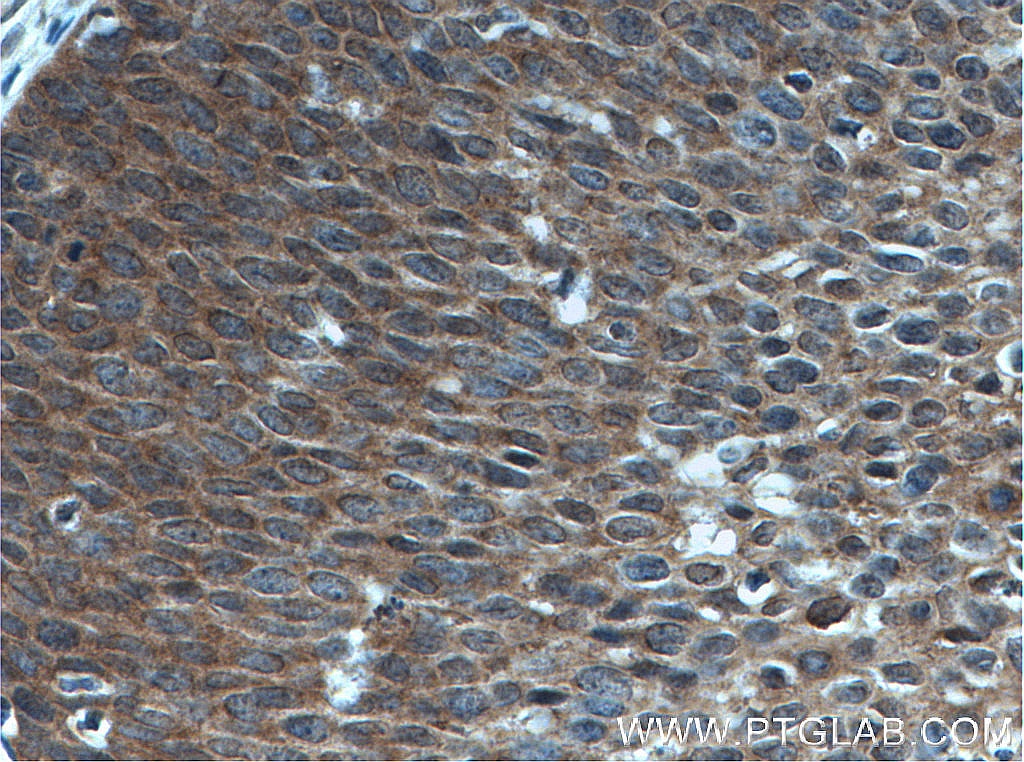Oncostatin M Polyklonaler Antikörper
Oncostatin M Polyklonal Antikörper für WB, IHC, ELISA
Wirt / Isotyp
Kaninchen / IgG
Getestete Reaktivität
human, Ratte und mehr (1)
Anwendung
WB, IHC, IF, ELISA
Konjugation
Unkonjugiert
Kat-Nr. : 27792-1-AP
Synonyme
Geprüfte Anwendungen
| Erfolgreiche Detektion in WB | MCF-7-Zellen, Jurkat-Zellen, Rattenhodengewebe |
| Erfolgreiche Detektion in IHC | humanes Kolonkarzinomgewebe, humanes Zervixkarzinomgewebe Hinweis: Antigendemaskierung mit TE-Puffer pH 9,0 empfohlen. (*) Wahlweise kann die Antigendemaskierung auch mit Citratpuffer pH 6,0 erfolgen. |
Empfohlene Verdünnung
| Anwendung | Verdünnung |
|---|---|
| Western Blot (WB) | WB : 1:500-1:2000 |
| Immunhistochemie (IHC) | IHC : 1:50-1:500 |
| It is recommended that this reagent should be titrated in each testing system to obtain optimal results. | |
| Sample-dependent, check data in validation data gallery | |
Veröffentlichte Anwendungen
| WB | See 1 publications below |
| IHC | See 2 publications below |
| IF | See 1 publications below |
Produktinformation
27792-1-AP bindet in WB, IHC, IF, ELISA Oncostatin M und zeigt Reaktivität mit human, Ratten
| Getestete Reaktivität | human, Ratte |
| In Publikationen genannte Reaktivität | human, Maus |
| Wirt / Isotyp | Kaninchen / IgG |
| Klonalität | Polyklonal |
| Typ | Antikörper |
| Immunogen | Oncostatin M fusion protein Ag27093 |
| Vollständiger Name | oncostatin M |
| Berechnetes Molekulargewicht | 252 aa, 28 kDa |
| Beobachtetes Molekulargewicht | 28 kDa |
| GenBank-Zugangsnummer | BC011589 |
| Gene symbol | OSM |
| Gene ID (NCBI) | 5008 |
| Konjugation | Unkonjugiert |
| Form | Liquid |
| Reinigungsmethode | Antigen-Affinitätsreinigung |
| Lagerungspuffer | PBS with 0.02% sodium azide and 50% glycerol |
| Lagerungsbedingungen | Bei -20°C lagern. Nach dem Versand ein Jahr lang stabil Aliquotieren ist bei -20oC Lagerung nicht notwendig. 20ul Größen enthalten 0,1% BSA. |
Hintergrundinformationen
Oncostatin M (OSM) is a multifunctional cytokine that belongs to the interleukin-6 (IL-6) family. It is primarily secreted by activated T lymphocytes and macrophages as a 28 kDa glycoprotein. OSM shares properties with all members of this cytokine family, but is most closely related in structure and function to leukemia inhibitory factor (LIF). OSM acts on a variety of cells and is involved in regulating gene activation, cell growth, and inflammatory processes. It is a potent inducer of anti-proteases, has anti-inflammatory properties, acts as an immune modifier, and promotes the deposition of extracellular matrix proteins . In the context of respiratory diseases, OSM may play a significant role in normal wound healing, as well as in remodeling and pathological fibrosis.
Protokolle
| PRODUKTSPEZIFISCHE PROTOKOLLE | |
|---|---|
| WB protocol for Oncostatin M antibody 27792-1-AP | Protokoll herunterladen |
| IHC protocol for Oncostatin M antibody 27792-1-AP | Protokoll herunterladenl |
| STANDARD-PROTOKOLLE | |
|---|---|
| Klicken Sie hier, um unsere Standardprotokolle anzuzeigen |
Publikationen
| Species | Application | Title |
|---|---|---|
Jpn J Ophthalmol Role of oncostatin M in the pathogenesis of vernal keratoconjunctivitis: focus on tissue remodeling. | ||
Int J Radiat Oncol Biol Phys Oncostatin M/Oncostatin M Receptor Signal Induces Radiation-Induced Heart Fibrosis by Regulating SMAD4 in Fibroblast | ||
Neoplasia β-Catenin mediated TAM phenotype promotes pancreatic cancer metastasis via the OSM/STAT3/LOXL2 axis |
